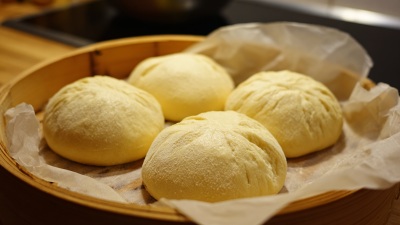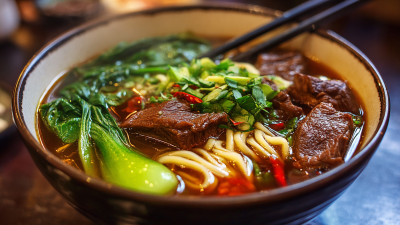
In the world of desserts, few creations are as elegant and delightful as the Crepe Cake. This multi-layered masterpiece, made by stacking delicate crepes with luscious fillings, has gained immense popularity in recent years. However, achieving the perfect Crepe Cake goes beyond simply stacking layers; it requires a blend of artistry and scientific technique. To truly master this delectable treat, one must understand the nuances of crepe batter preparation, cooking methods, and layer assembly, all while utilizing the best practices that enhance flavor and texture.

In this exploration of the art and science behind perfecting your crepe cake techniques, we will delve into the essential tips and tricks that can elevate your culinary skills. Join us as we uncover the secrets to creating a stunning Crepe Cake that not only looks impressive but also tantalizes the taste buds.
When it comes to creating the perfect crepe cake, the choice of flour plays a pivotal role in determining the overall quality and texture of the final product. The two most common types of flour used in crepe-making are all-purpose flour and cake flour. According to the Flour Advisory Board, all-purpose flour contains a protein content of about 10-12%, which provides sufficient structure while still allowing for elasticity. This makes it a versatile option for crepe layers that need to hold their shape yet remain tender. In contrast, cake flour typically has a lower protein content, around 7-9%, resulting in a lighter, more delicate texture that can enhance the melt-in-your-mouth experience of crepes.
Additionally, the impact of gluten development cannot be overlooked. A study conducted by the American Institute of Baking found that lower gluten levels in cake flour contribute to a smoother batter, which is essential for achieving the thin layer of a successful crepe. This delicate balance between flour type and batter consistency is crucial; incorporating techniques such as letting the batter rest can further enhance the crepes' quality by allowing gluten to relax. Ultimately, understanding these flour characteristics is essential for bakers aiming to create the ideal crepe cake, as it influences not only flavor but also the aesthetic appeal of each layer.

Creating the perfect crepe cake centers around mastering the batter, which is fundamental to achieving that delicate texture we all crave. The ideal crepe batter relies on the right ratios of flour, eggs, milk, and butter. A common guideline is to use one cup of flour to two cups of milk, ensuring you incorporate eggs to bind everything together. This combination not only gives the crepes their structure but also allows for a silky, supple finish. Remember, resting the batter for at least 30 minutes can significantly improve the texture, as it allows the gluten to relax and the flavors to meld beautifully.
**Tips:** When mixing your batter, opt for a whisk instead of a mixer. This method will prevent incorporating too much air, which could result in a fluffy texture that detracts from the desired crepe style. Additionally, if you find your batter too thick, adjust the consistency with a splash of water or milk, but be cautious not to overdo it. Lastly, try to keep your cooking surface at a consistent medium heat; too high, and your crepes will burn on the outside while remaining raw inside.
| Ingredient | Amount (grams) | Purpose | Mixing Technique |
|---|---|---|---|
| All-purpose Flour | 250 | Provides structure | Sift well to aerate |
| Milk | 500 | Moisture and richness | Mix gradually to avoid lumps |
| Eggs | 4 | Binding agent | Blend until fully combined |
| Butter | 50 | Flavor and tenderness | Melt and mix in last |
| Sugar | 30 | Sweetness | Dissolve with milk |
| Salt | 5 | Enhances flavor | Add to dry ingredients |
Temperature control is critical when it comes to mastering the art of crepe cake making. A study published in the Journal of Food Science highlights that the optimal cooking temperature for crepes ranges between 350°F to 375°F (175°C to 190°C). Cooking within this range allows for a delicate balance: too low a temperature results in crepes that are pale and undercooked, while too high leads to burnt edges and an undesirable texture. This is particularly important when stacking layers, as uneven cooking can compromise the structural integrity of the cake, leading to collapse or separation.
Moreover, the temperature also influences the layering process. According to the Culinary Institute of America, cool crepes enhance adhesion between layers, allowing them to hold their shape better. When crepes are allowed to cool to approximately room temperature before layering, they become less fragile and easier to manipulate. Additionally, a controlled environment helps in maintaining even heat distribution, which is crucial for achieving that signature thinness and flexibility in each crepe. Ultimately, understanding and implementing proper temperature control techniques can transform a simple crepe cake into a stunning masterpiece that showcases both skill and precision.
Achieving the perfect crepe cake requires not only masterful culinary skills but also a deep understanding of the science behind layering. A successful crepe cake typically consists of 15 to 20 delicate layers, where even cream distribution is crucial for both structural integrity and flavor balance. According to industry research by the Culinary Institute of America, the optimal thickness for each crepe should be around 1.5 millimeters to ensure that it cooks evenly and allows for multiple layers without overwhelming the palate.
To ensure an even distribution of cream between layers, it’s essential to consider both texture and temperature. Studies have shown that a thicker cream can create a more substantial mouthfeel but may not spread as easily, while a lighter whipped cream allows for easier layering and a more airy consistency. Professional chefs often recommend using a combination of mascarpone and whipped heavy cream, as this achieves both density and spreadability. Additionally, using a piping bag to apply the cream can provide precision, ensuring each layer is uniformly coated and the cake maintains a beautiful aesthetic as well as a balanced flavor experience across all bites.
 Creating a visually stunning presentation for your crepe cake is an essential part of crafting a memorable dining experience. According to a recent report by a leading culinary research firm, 67% of diners believe that food presentation significantly enhances their overall enjoyment of a meal. This first impression is critical, as it sets expectations and generates excitement, making decorative techniques vital for elevating your crepe cake. Consider incorporating layers of fresh fruit, edible flowers, or artisan chocolate shavings to enrich the visual appeal while complementing flavors harmoniously.
Creating a visually stunning presentation for your crepe cake is an essential part of crafting a memorable dining experience. According to a recent report by a leading culinary research firm, 67% of diners believe that food presentation significantly enhances their overall enjoyment of a meal. This first impression is critical, as it sets expectations and generates excitement, making decorative techniques vital for elevating your crepe cake. Consider incorporating layers of fresh fruit, edible flowers, or artisan chocolate shavings to enrich the visual appeal while complementing flavors harmoniously.
Moreover, texture plays a crucial role in presentation. Research indicates that dishes with varied textures are perceived as more appealing, urging chefs to explore creative garnishing methods. Consider using flavored sauces drizzled artistically around the plate or a dusting of powdered sugar for added finesse. By thoughtfully combining these presentation techniques, not only will you captivate your guests visually, but you'll also engage their senses—creating a complete dining experience that goes beyond taste alone, offering a feast for the eyes as well.






